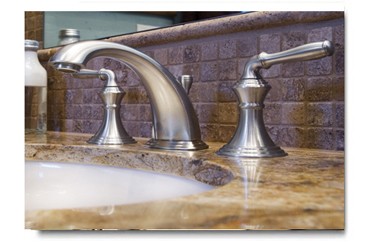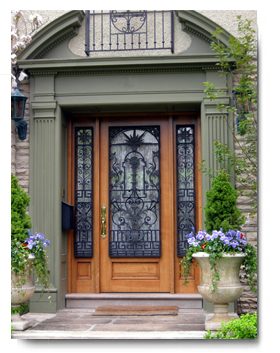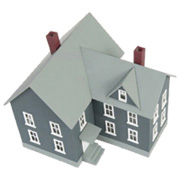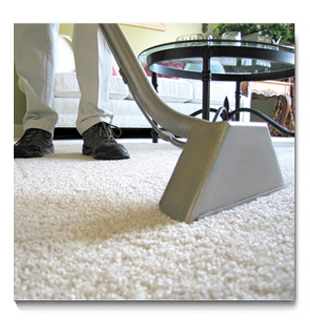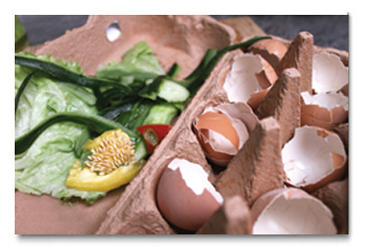


Some people do spring cleaning in, well, spring. I prefer to do it before I start a new endeavor. In preparation for the New Year, you will need to make room for your new adventures and opportunities in your life.

Clean Up Your Schedule
Start with freeing up your time. Do you find yourself on the computer or in front of the television only to look up and see that 2 hours have passed?
Time is a unique gift in that it passes whether you are using it consciously or not, and you can’t get it back.
If you want to know if you have any extra hours in the day, record how you spend your time for the next 14 days. Do so diligently in 15 minute increments.
I realized that it takes me 30 minutes in the morning to begin doing anything. When I figured this out, I tried to squeeze my morning time in order to exercise and meditate before I head out to work. I set the alarm for a half hour earlier.
For the New Year you might want to develop new habits like exercising, but you may think, “I don’t have the time.” Find out where you are spending your time, and take steps to cut the fat from your schedule.
Clean Up Your Living Space
Make physical space in your life. Get rid of knick-knacks. File the pile of bills on your desk. You might have bought new clothes, but left the unworn clothes in the closet. Get organized, and create some physical space in your world.
It may seem irrelevant to do this in order to achieve your goals for the coming year. However, having space in your physical surroundings translates into calm, openness, and peace of mind. It will become a place where you sprout fresh ideas.
Prune Your Circle
Ask yourself the question: “Who supports my genius and purpose, and who must be left behind?”
Sometimes old friends fall away without deliberate action when they become out of step with you. On the other hand, sometimes we cling to relationships that drain our energy rather than infuse us with zeal. Rather than do anything drastic like never calling back or confronting a friend, try just shifting your social time and energy to people who are fueling you. When you do this your circle of friends will morph into one that supports your goals.
Make room for the New Year; it is here!



More minor accidents occur in the bathroom than in any other room. The good news is they are mostly preventable with these easy steps.
Make it a fall-free zone. Swap cloth bath mats for a rug with a non-slip backing or liner. Also make your tub slip-free with a non-skid mat or adhesive strips.
Prevent shock. Shock is typically caused when hair dryers and electric razors touch water. The solution would be to replace your wall outlet with a ground fault circuit interrupter, which automatically cuts off power when appliances get wet.
Set your hot water heater. Eliminate the potential for scalding by setting your hot water temperature to 120 degrees F or 48 degrees C. Replace your tub spout with a Hot Stop spout that reduces water to a trickle if it reaches dangerous temperatures.
Splash some colour on the walls. A white tub and toilet along with white walls can lead to falls for children or for people that do not have good vision. Adding bright trim or decals will prevent mishaps since the edges can be identified easily.
BONUS TIP: The best way to dry tub toys is in a net or mesh basket. It allows for even drying so that germs can’t grow and spread. And wash toys that trap water, like rubber ducks, with a diluted bleach solution, then rinse.

Once a child moves away from home it might be time to consider updating their kid-friendly room to make it more guest appropriate. The main focus of any bedroom is the bed, so why not make it stand out with a unique and interesting headboard.

• A D-I-Y headboard is a great way to add class to any room without breaking the bank.
• Experiment with one of these fun projects
• Create a focal point by painting grid boxes in bright colors on the wall, aligned above the bed.
• Get an illusion of a headboard by painting the wall area over the bed a different color and lining it with wallpaper trim.
• Create rustic ambiance by repurposing vintage doors or window frames and hanging them above the bed.
• Design a custom fabric headboard with bed linens that have matching sheets, comforters and drapes. Once the headboard is complete, extend the project by adding a new coat of paint, a glamorous chandelier and a new area rug to create the ultimate retreat for your guest.

The extra living space that a finished basement can provide is a real bonus. Here are some key points to consider to provide the best situation for your family.
1. CREATE GOOD HEADROOM.
a minimum of 6 ft. 8 in., but 7 ft. 6 in. or more is ideal.
2. THE NEXT ISSUE IS WARMTH.
Insulate walls, upgrade windows and address the issue of cold concrete floors.
3. ADD LIGHTING.
with dimmer switches and arrange in small well lit areas.
4. PAINT COLORS.
should be warm but not dark. Trim should be painted white or off-white, semi-gloss.
5. STORAGE.
can be added at a relatively low cost. Combine areas that are hidden behind doors with some open shelving to make the space seem bigger.


The electrical outlet not only provides vital access to the electrical current that makes your house hum, but it also warrants deeper consideration for reasons of comfort and safety. Our Pillar To Post® inspectors have seen it all when it comes to incorrect outlet wiring, a safety hazard if left unattended. But before we discuss safety measures, let’s start with a quick tour of this component and its mate, the plug. Hidden behind the outlet is a series of wires that must be properly connected for the outlet’s safe functioning. On a modern electrical outlet that accommodates a three-pronged plug, each hole serves a specific purpose: the round hole is for the ground pin on the plug; the small slot takes the small blade on the plug and connects to the “hot” wire in the outlet (the wire that can cause a shock); the large slot takes the large blade and connects to the “neutral” wire in the outlet. Specific wires have to be connected to the proper terminals for an outlet’s safe function. Pillar To Post® inspectors spot-check outlets with a tester during every inspection.
Reverse Polarity
The large slot and small slot on an electrical outlet, and the different-sized blades on a plug, designate their respective polarizations, and ensure that the plug goes in the outlet only one way, a safety feature that reduces the chances of shock. A light-bulb socket has exposed electrical connections, the threads being the most exposed part. But polarized socket threads are attached to the neutral wire to prevent someone from getting a shock when changing a light bulb. If the electrical outlet itself is mis-wired with reverse polarity, the lamp socket threads described above will become “hot”. Touching the threads in the socket, or on the bulb as you screw it into the socket, may give you a shock.
Outlet Not Grounded
In older homes, sometimes the cable leading to the outlet does not have a ground wire, yet the outlet has nonetheless been upgraded to a modern grounded type. Some plug-in electrical devices need this ground connection for their built-in safety features. If the outlet appears to be grounded but is not, the device’s safety features will not work.
Old Outlets
In older homes outlets may have no ground slot at all. This does not represent a defect or safety concern, but you will not be able to plug in an electrical appliance that has a ground pin on the plug. Today, most plug-in appliances are not the grounded style and, therefore, do not use or have a ground pin on the plug because they are a double insulated design. the old ungrounded outlet will work fine. If you think it might be a good idea to simply cut off the ground pin to accommodate an outlet without a ground hole, think again. This procedure is doubly unsafe because it not only bypasses the grounding safety feature, but also it bypasses the polarizing feature since a de-pinned plug can be inserted into the outlet either way.


Experts say that key numbers reveal insights into what makes you tick.
1. Leadership. You are a go-getter. You have no problem taking action.
2. Harmony. You are diplomatic - kind, sensitive and fair, you sometimes seem indecisive.
3. Intuition. You are creative - transform different elements into something new.
4. Stability. You are grounded - dependable, down-to-earth and wonderfully supportive.
5. Expansion. You are adventurous - always looking for the next big adventure.
6. Compassion. You are nurturing - with an instinctive understanding of others and a big picture outlook.
7. Mystery. You are a searcher - deeply curious and a great inventor.
8. Success. You are dynamic - with virtually endless energy and determination.
9. Completion. You are enlightened - graduated from the school of hard knocks and experience.


Here are some great uses for the mouthwash that usually sits on your bathroom counter.
• KILL KITCHEN GERMS. Wipe down your sink handles and basin with a rag dipped in mouthwash. It will instantly kill germs and add shine to your sink.
• CLEAN THE TOILET. Pour in mouthwash and let it sit for half an hour, then swish it around with a toilet brush for a clean bowl.
• GOODBYE ODORS. To get rid of strong odors left on your hands after cooking with garlic and onions, dip a cotton ball in mouthwash and rub it over your hands.
• STOP MOLD GROWTH. Use an old toothbrush dipped in mouthwash to clean and sanitize the grout in your bathrooms.


While it should go without saying that the relevant circuit breaker should be shut off prior to working on any electrical device - let us state this here as a safety precaution.
Outlet is Warm or Gives Off Sparks
Not good. Unplug all cords. Get inside and make sure that wire ends are all firmly connected. If there is any doubt about the condition of the receptacle, simply replace it.
Circuit Breaker Tripping or Fuse Burning Out
The most common reason for circuit breaker tripping is an overloaded system. Turn off appliances that consume a lot of electricity, flip the breaker, and try again.
A Light or Appliance Doesn’t Turn On
If the circuit breaker trips or fuse burns out, then lights and appliances will not work. But this usually affects a series of lights or series of appliances.
Cord Falls Out of Outlet
Bend out prongs to make the wire stay in the outlet or easily replace wires for lamps. Be careful about appliance cords, though - given the high power draws. Finally, the outlet may simply need to be replaced if it is old enough.

CLICK HERE FOR A PRINTABLE PDF
(800) 294-5591
pillartopost.com
If you would like to use any of this content for your own use, please contact marketing@pillartopost.com


 icon and select "Add to Home Screen".
icon and select "Add to Home Screen".




